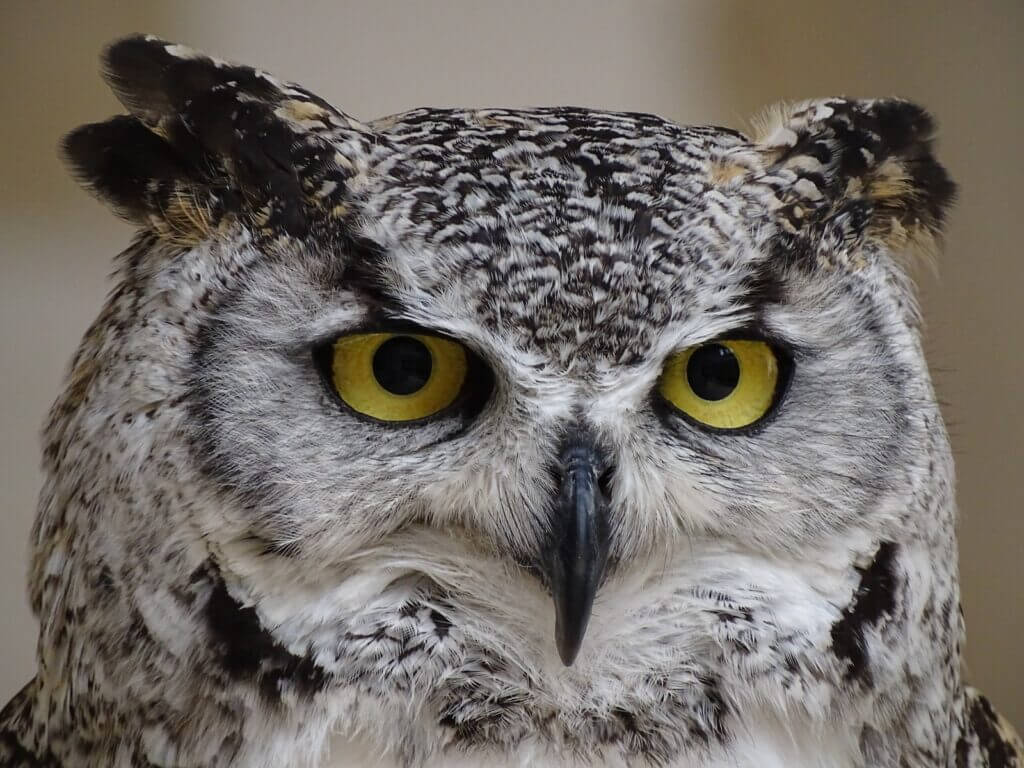As darkness descends, an eerie symphony begins in the forests and woodlands. The beguiling calls of owls ring out through the night air, at once mysterious and captivating. Their hoots, barks, screams and whispers evoke an enigmatic language beyond human words. These vocalizations form a complex system of auditory signals rich in meaning. Can we decode the secrets hidden within? Read on to unravel the mysteries behind the owl’s haunting hoots and glimpse their veiled world.
The Captivating Allure of Owl Hoots
When owl hoots begin at dusk, our eyes survey the dark tree branches, hoping to glimpse these charismatic birds of the night. Though rarely seen, owls reveal themselves soundly. Their hypnotic hoots, shrieks and trills imbue the night with a primal fascination.
We strain our ears to interpret each hoot, chirp and whistle. What information might owls be conveying in this bewitching cacophony? The very mystery draws us in. Like archeologists deciphering hieroglyphs, we feel compelled to decode the messages within owl vocalizations.
Beyond satisfying our curiosity, understanding owl hoots offers insights into owl behavior, communication, and the hidden world they inhabit. As researchers progressively unravel the nuanced language of owls, let’s explore what we’ve discovered so far.
The Many Meanings of Owl Hooting: A Symphony of Communication
Though owls may seem solitary, their vocalizations form a complex communication system essential to their survival. Owls use hoots and calls to defend territories, attract mates, interact with family, and more. Here are some of the messages owls may be conveying when they hoot:
Territorial Calls
Many owl hoots are territorial proclamations to rivals. Barred owls’ quintessential “Who cooks for you? Who cooks for you all?” marks the bounds of their domain. Long, loud hoots deter intruders and warn trespassers.
Courtship Displays
When seeking mates, male owls perform elaborate courtship hoots called “song flights.” These beautiful love songs couple acrobatic aerial displays with rhapsodic hooting ballads to attract females.
Communicating with Mates
Mated pairs duet together, with male and female exchanging intimate hoots that help coordinate hunting, defend young, and more. Partners can find each other even in dense forests using hoots.
Begging Calls From Owlets
Young owlets emit incessant raspy screeches called begging calls when hungry. These notify parents it’s time to deliver the next tasty mouse or vole snack.
Alarm Calls
Barks, hisses and sharp shrieks act as alarm calls to notify other owls of danger, whether an encroaching owl or approaching predator. Defensive adults will scream to scare off the threat.
Clearly, owl vocalizations convey a diverse array of messages essential to mating, rearing young, avoiding threats, and defending territory. But can we dive deeper to fully decode the nuances of meaning within?
Decoding the Language of Owls: Territorial Calls, Courtship Displays, and More
Researchers are gradually unraveling the sophistication of owls’ auditory language. Here are some of the insights gleaned so far into owl communications:
Signature Hoots Identify Individuals
Like accents in human languages, details of hoots vary by species and even individual owls. Owls may be addressing each other by name when they hoot!
Pitch and Volume Convey Information
Just like we stress words when we speak, owls modulate volume and pitch to encode messages. A loud, low hoot may signal aggression while a higher-pitched hoot invites approach.
Duetting Coordinates the Pair
By matching their hoots’ rhythm, mated owls create a duet that may coordinate hunting, reinforce bonds, or convey other key information.
Females Signal Receptivity to Mates Through Hoots
Subtle qualities of a female’s hoots around the nest indicate her reproductive status and receptivity to breeding. The male responds accordingly.
Young Beg More Intensely When Hungrier
Research shows owlets screech faster, more insistently and more repetitively when very hungry versus mildly peckish. Much like a human baby’s evolving cries.
There is still much to discover. But time and again, owls demonstrate an intricate vocal language beyond what we’d expect from mere instinct. Their hoots are imbued with symbolic meaning – a true syntax all their own.
The Cultural Significance of Owl Hoots: From Folklore to Modern Interpretations
Beyond what it reveals about owls themselves, owl hooting also impacts how human cultures interpret and relate to these mysterious birds. The hypnotic hoots of owls have inspired myth, folklore, art and story across societies.
Omens of Death
In many cultures, owl hoots foretold death or misfortune. Their nighttime activity linked them with darkness and evil in medieval Europe.
Guardians of Secret Knowledge
Because they operated at night while humans slept, owls attained associations with lost or secret wisdom in many societies, from Native Americans to ancient Greeks.
Harbingers of Magic
Owl’s occult links evolved into associations with magic and witchcraft. Witches were envisioned as shapeshifting into owl forms in European folklore.
Symbols of Timeless Mystery
Modern interpretations continue to imbue owl vocalizations with a sense of timeless mystery. Their haunting hoots never lose their primal magnetism.
No matter how well we scientifically demystify it, owl hooting retains its elusive magic. The owl’s song retains its talismanic power over the human psyche.
Unraveling the Mysteries of Owl Hooting: Ongoing Research and Discoveries
While we’ve made great strides in deciphering the communications of owls, much remains enigmatic. As technology develops, researchers progress in recording, analyzing, and understanding owl vocalizations.
Advanced sound analysis reveals ever more complex structures within hoots. High-speed video links hoots to behaviors. Tracking technology connects hoots to territorial boundaries. There is still so much to learn.
Yet part of what makes owl hoots so magical is their resistance to complete demystification. The night forest remains the owl’s domain, and we its privileged eavesdroppers. The hoots retain their aura of ancient mystery, despite our modern insights.
So next time you hear owls speak to the night, both marvel at their intricate language, and relish the untamed wildness their hoots still summon within. Their croons call us to embrace the unknown, and remember the timeless mysteries that still surround us in nature. Lift your ears, and listen to the ageless secrets within.




